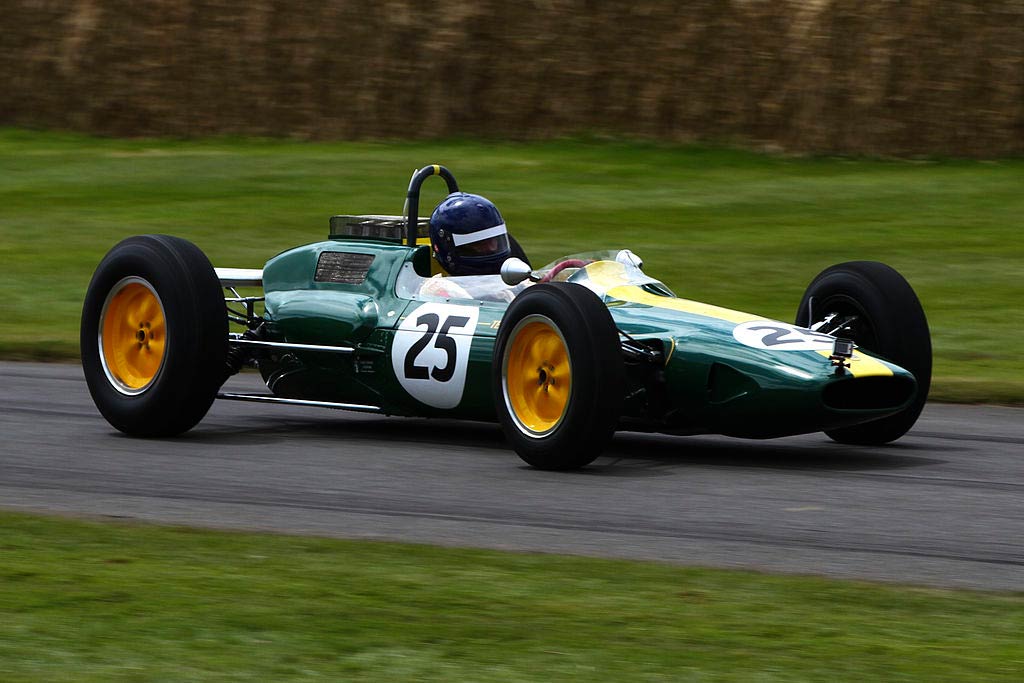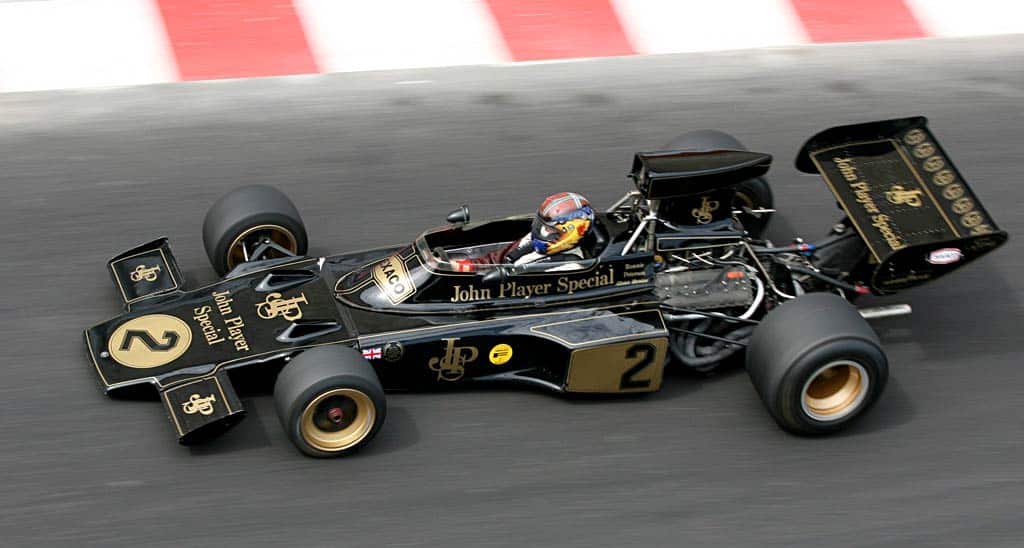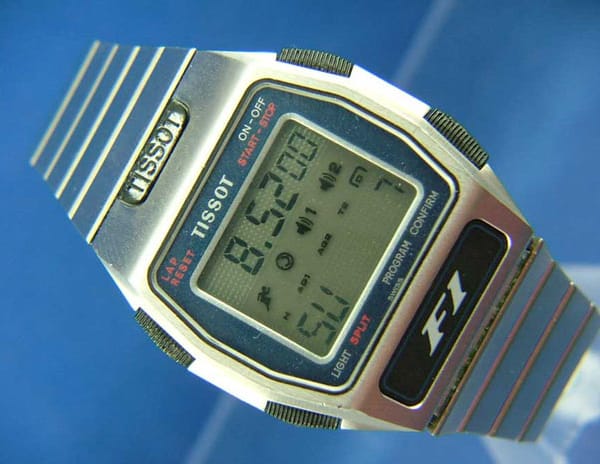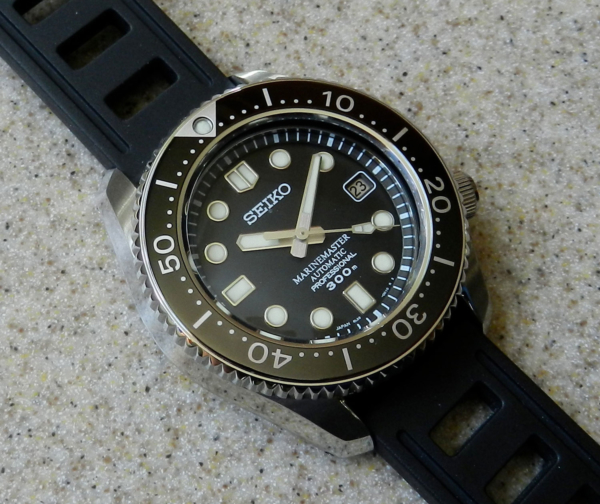The Seiko 6138 is a model that’s mentioned a lot in watch collecting circles, and for very good reason. While it’s not Seiko’s first automatic chrono (the 6139 takes that honor being released one year earlier in 1969), it is their first two-register model, featuring 30-minute and 12-hour sub-dials. Couple this with day-date as well as handwinding, and you have an extremely competent movement in a very reliable Seiko package. And what a dazzling array of packages it came in! Some of these models are legendary in the Seiko world, garnering nicknames like UFO, Bullhead, and Big Blue. All of these are treasured by collectors, and all of them have steadily risen in value over the past few years.
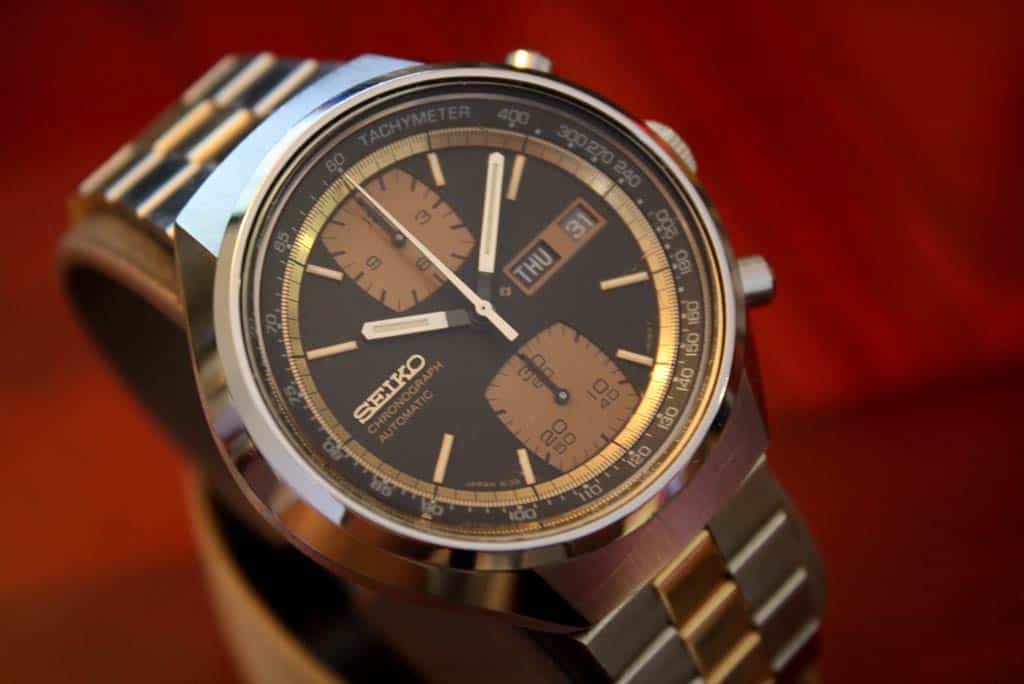
I want to talk, however, about one of the lesser-known models- the 6138-8039, or as it’s known by some, the “John Player Special”. The “John Player Special” is one of the later models to come around in the 6138 line, with most serial numbers pointing to mid-1976 or later. Like many models in the 6138 range, it’s at least partially designed with racing in mind, with clear markers and a tachymeter ring. What’s more, Seiko marketed their chronograph line at the time with heavy use of motorsports images, albeit most of these were stock photos of the Ferrari endurance racing program. But with the 6138-8039, they took the next step and dressed an already handsome and capable racing chronograph in the colors of one of the most storied F1 teams of all- Lotus.
By 1976, Lotus had firmly established itself as a leader of innovation in Formula 1. The team had spent the previous decade firmly dominating the World Championship through both their cutting-edge technical advancements and driver lineups featuring some of the best drivers ever to grace the grid, including championships for the late Jim Clark in 1963 and 1965, in the car which debuted the first fully stressed monocoque chassis in racing, the sublime Lotus 25 and its direct evolution the Lotus 33.
Lotus took the title again in 1968 with British driver Graham Hill behind the wheel of an improved-for-1968 Lotus 49 chassis, a car which pioneered aerodynamic wings and the use of the engine as a stressed member of the chassis. In addition, that engine, the Ford Cosworth DFV, would go on to dominate F1 engine design for the next 15 years. After their driver Jochen Rindt posthumously won the 1970 title, the team spent the 1971 season recuperating and testing before coming to bear on the 1972 season armed with 25-year-old Brazilian hotshot Emerson Fittipaldi and an updated Lotus 72D chassis- replete with innovations like side-mounted radiator pods, overhead air intake, and a wedge-style body.
It was a stunning glimpse of the future when it pulled out of the transporter for the first race of the season in Buenos Aires, but perhaps most stunning of all was the paint scheme. In the off season, the team had signed a sponsorship agreement with John Player Tobacco, and the cars lined up for the start painted in the elegantly simple John Player black and gold design. Fittipaldi and the John Player 72D ran away with the season, recording 8 podiums and five wins en route to the title. The stage was set for the black-and-gold John Player Specials to race their way into the ranks of the legends, and they did. John Player-colored Lotus racers went on to 2 more constructor’s championships, 31 race wins, and a drivers’ title for Mario Andretti in 1979 before JPS bowed out of the sport once and for all at the end of 1986.
While there’s no official evidence of Lotus being mentioned at the Seiko design offices, and certainly no official partnership between the two companies (more on that later), it’s hard not to look at the Seiko “John Player Special” and not see the touch of the Lotus John Player Specials. The starkness of the flat black dial is cut through by slightly sunken gold sub-dials, which at the right angle display just enough metallic grain to subtly catch the eye. The black and gold theme continues in the inner chapter ring, the day-date window frame, and the golden applied Seiko logo at 9 o’clock. White hour, minute, and chrono seconds hands, white applied line-type markers at 1, 2, 4, 5, 7, 8, 10, and 11, along with white text along the tach ring, provide contrast and balance to keep the two-tone color scheme from becoming overwhelming.
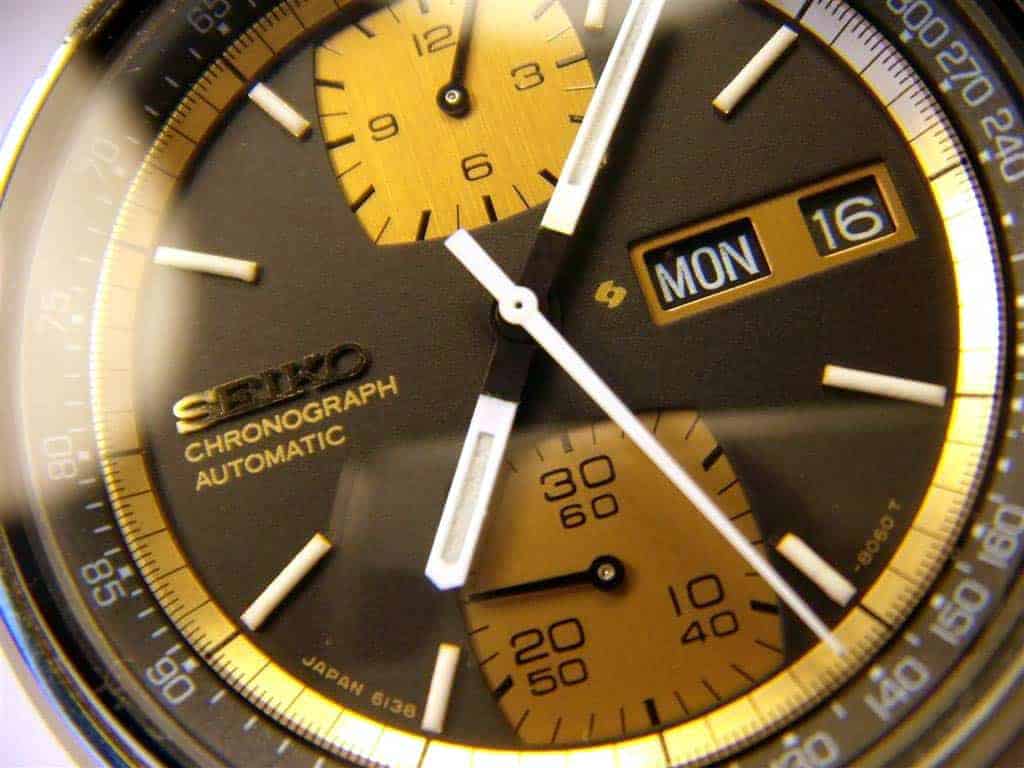
It’s a dial with miles of depth, and when I first handled this watch I was almost taken aback by how far every element seems to float from each other, especially when viewed at oblique angles. I still find myself staring sometimes in wonder at just how far above the sub-dial the central seconds hand seems to sit. The watch almost feels bowl-like at times. Part of that appearance of depth, of course, has to do with the fact that it really is that deep- a whopping-for-1976 14 millimeters thick. Couple this with a 40 millimeter width and lugless case design, and the “John Player Special” defines the barrel case.
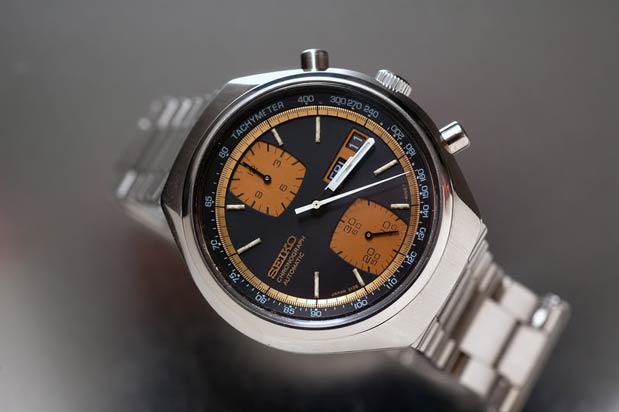
Thankfully, sloping case sides transitioning abruptly into a vertical wall keep the watch from looking fat or shapeless, and polished soft curves and angles throughout make the case design interesting. Overall, it’s one of the most attractive, coherent designs in a line famous for several attractive, coherent designs, and for a racing fan looking to show off his passion without resorting to the garish world of team-branded apparel. If you’re looking to pick one up for yourself, keep in mind that like most vintage Seikos, prices have begun to rise in the past few years, but the “John Player Specials” are still very affordable, generally ranging from about $200-$800 depending on condition.
by Sean Lorentzen









 Featured Videos
Featured Videos




